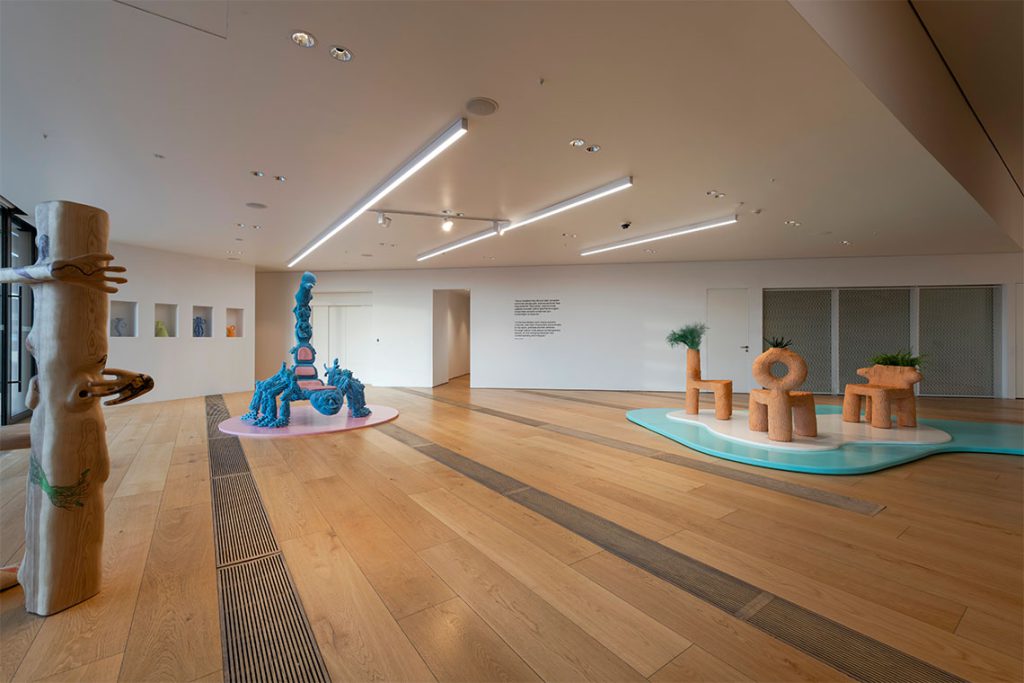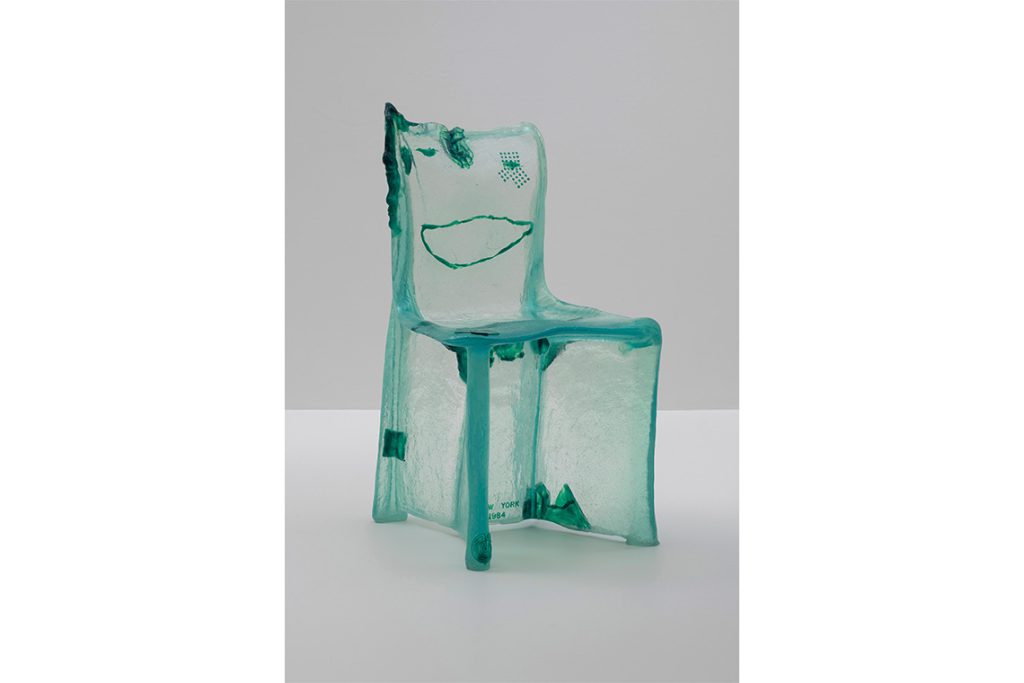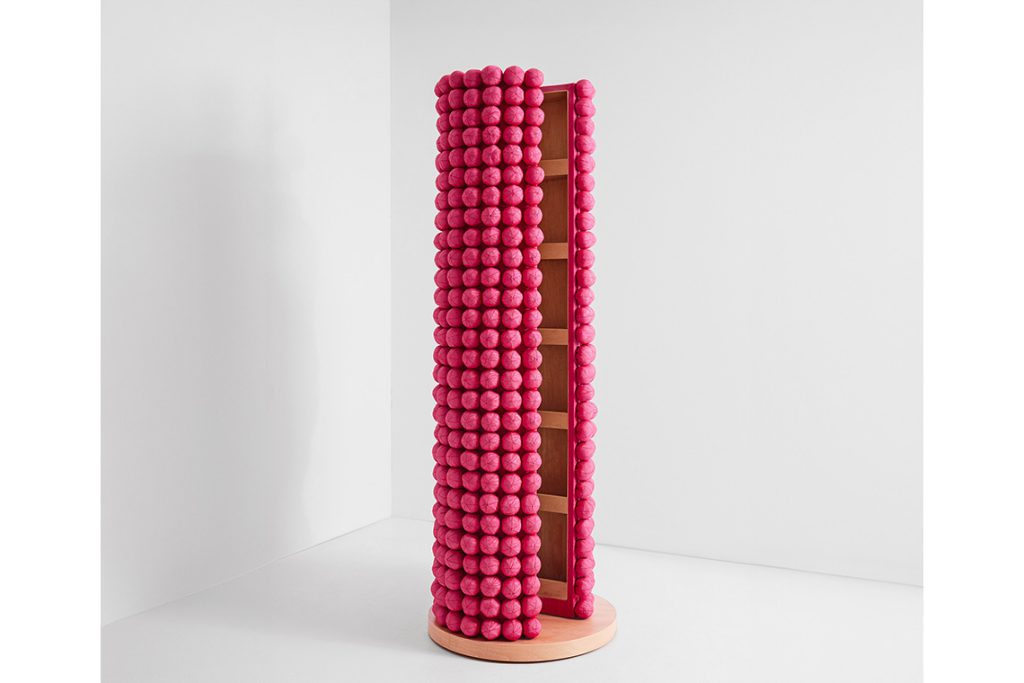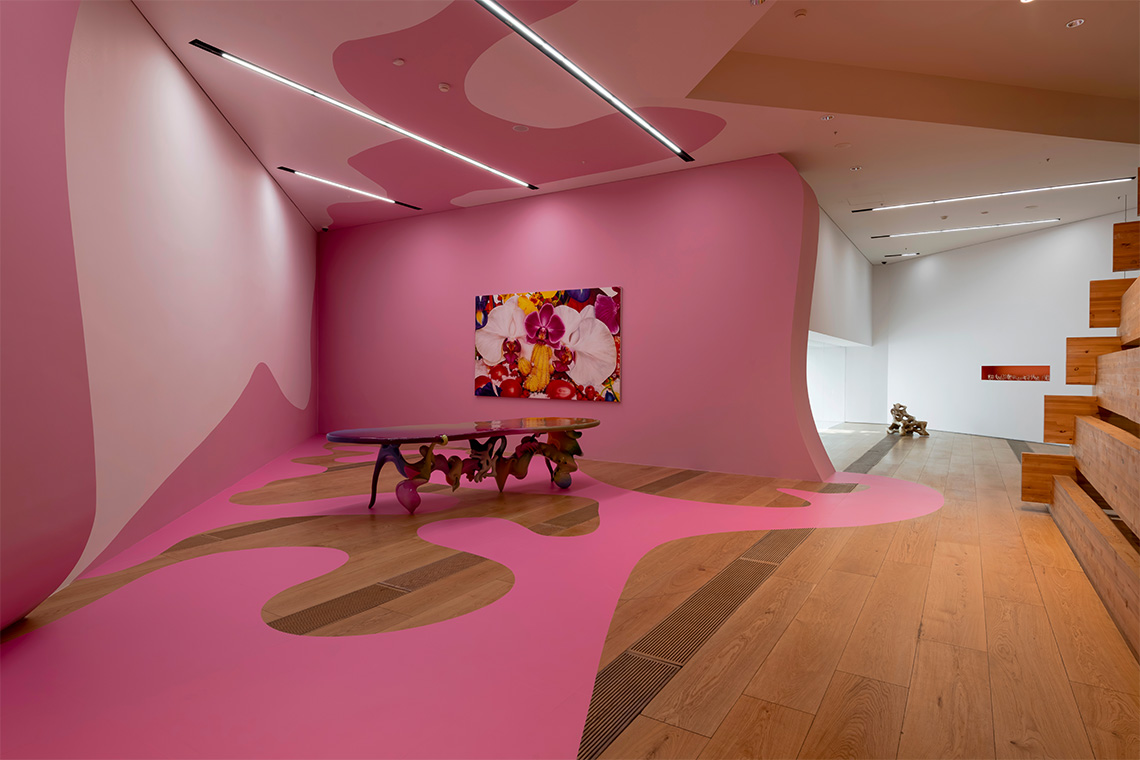Fantastic beasts, sprouting chairs and microscopic entropy populate Creatures of Comfort, a group show at Turkey’s Odunpazarı Modern Museum that celebrates our natural impulses.
A new exhibition at Odunpazarı Modern Museum (OMM) wants us to let the outside world in. In works inspired by nature or hewn from its materials, Creatures of Comfort reminds us that, as the poet Gary Snyder wrote, “Nature is not a place to visit, it is home.”
Humankind is growing ever more estranged from nature, with more than half of the world’s population now living in cities. Researchers have shown that this deepening disassociation takes a toll on our mental and physical health and affects the degree to which we care about climate change and other environmental crises.
Much of the work in Creatures of Comfort is acutely concerned with the state of the planet. From Chris Wolston’s dancing Nalgona Chairs (2019 – 2021), made of sustainably harvested Colombian wicker, to Saelia Aparicio’s birchwood sculptures of crouching creatures from 2022, the 38 artists and designers, who work in New York, Istanbul, Hong Kong and across Europe and Latin America, reject the homogeneity of Modernist aesthetics to carve out a space for the wild.
“The essence of the exhibition is to bring nature back into our living spaces,” said OMM director Defne Casaretto. “It’s a show in which artists use nature for their materials or take their reference from nature – against the Bauhaus and Minimalism movements that have turned the design world into a single type.”

Image courtesy of Odunpazarı Modern Museum
Creatures of Comfort marks the fifth anniversary of OMM’s opening in the city of Eskişehir, and the museum is planning to send the exhibition to Amsterdam after it closes next year. Curated by İdil Tabanca, who founded the contemporary art museum with her father Erol, the show draws in part from their collections and includes tapestries, ceramics, lighting and paintings, with furniture at the fore.
At least one piece, Mycelium Chair (Version 3.0) (2024), is alive. Dutch designers Eric Klarenbeek and Maartje Dros 3D-printed a skeleton of hemp, water and mycelium, the thread-like roots of fungi. Placed in an incubator, the fungus bound the fibres together to create a lightweight, soft yet sturdy chair. After they shipped it to Eskişehir, they discovered that the fungus had continued to sprout.
Anthropomorphism pervades the show, like the smiling face that emerges on Pratt Chair #7 (1984) by Italian architect Gaetano Pesce, who died earlier this year at the age of 84. Though he used industrial materials and methods, Pesce’s whimsical designs rebelled against the constraints of Modernist style and inspired a generation of designers.
British ceramicist Faye Hadfield pays tribute to eighteenth-century traditions of form, colour and glaze in Scary Vase in Tropical (2022), then gives the household object a soul with a devilish grimace. “In my work, I utilise the idea of a vessel, but instead of oil, grain or water, it holds emotions,” Hadfield told Canvas. “I work around the duality we have as human beings, that we all have a good and bad side.”

İdil Tabanca Collection
Our double nature appears in an untitled sculpture from 2021 by New York-based sculptor Hannah Levy. Hung from the ceiling, silicone that resembles skin is pierced and stretched by steel claws, evoking the pain and pleasure of fetish culture. The deadly sting of the scorpion is neutralised by a fuzzy, friendly-faced arachnid in Iranian artist and filmmaker Mamali Shafahi’s throne from 2021, which incorporates figures from the cosmic realm of Persian mythology. Inspired by the pink roe of apple snails, 560 handsewn balls of kutnu, a silken fabric produced for centuries in southeast Turkey, adorn the exterior of Ova Pink (2023) by the duo Yellowdot. The tower opens to playfully reveal a secret wooden compartment within.
While art in harmony with nature is a refrain throughout Creatures of Comfort, the technology is sometimes cutting-edge, like the robotic systems, 3D printers and virtual reality software American artist and designer Misha Kahn employs for his sculptures. His mohair wall hanging A Few Loose Ends (2022) – handwoven by the Stephens Tapestry Studio of Johannesburg and Eswatini – is a burst of fantastical microorganisms. Polyester, foam, fabric and steel are among the other materials Kahn plied in work on view in Creatures of Comfort.

Image courtesy of Studio Yellowdot
“I work through different processes and materials [but] the approach to imagery, form and language is still similar,” Kahn told Canvas. “So much of modern design is meant to be impersonal and universal to the point that it’s never specific. The reaction to that is to make something that represents the individual, even if it remains abstract.” Drawn by “the magnetic feel” of the otherworldly, he eschews the figurative. “What’s special about objects is that they are not us. They are something that lives a different life than you,” he said.
The underside of his banquet table coated in pastel auto paint is graced with imaginary flora and fauna. Before They’re Gone (2021) is a last supper before a future extinction. It stands before the oil-on-canvas New Mexico Spring (2010), by British artist Marc Quinn, a hyper-realistic profusion of flowers and fruits that, in truth, would never appear together in a natural state.
In The Origin of Species (1859), Charles Darwin wrote, “Endless forms most beautiful and most wonderful have been, and are being, evolved.” Creatures of Comfort reminds us that, for all of our alienation from nature, it remains an infinitely strange and beautiful source for artists.



